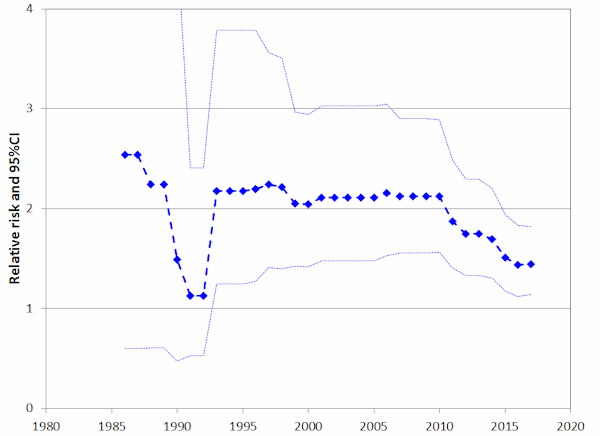Quite a lot of this site is devoted to explaining the scientific evidence on a possible connection between magnetic fields and childhood leukaemia. We summarise how quite a few studies over the years have reported statistical associations.
A new paper (published February 2019) has looked systematically at how the reported association, or relative risk, has changed over time. It includes 41 studies (believed to be all that have been published). It concludes that the reported risk has declined over time, from a bit over 2 to about 1.5, but is still present and still statistically significant:

Journal of Radiological Protection
Changes over time in the reported risk for childhood leukaemia and magnetic fields
John Swanson, Leeka I Kheifets and Ximena Vergara
Abstract
There have been many studies from 1979 to the present reporting raised risks for childhood leukaemia with exposure to power-frequency magnetic fields. There are also suggestions that the reported risk has been decreasing. We examine trends in the risk over time from all available studies. For 41 studies, we combine reported risks using inverse-variance weighting, drawing risk estimates from previous pooled analyses where possible for greater consistency. We examine the cumulative risk for studies published up to each successive calendar year for all studies and for various subsets, and test for a trend over the period. The cumulative relative risk has indeed declined, for our most rigorous analysis from a maximum 2.44 in 1997 to 1.58 in 2017, but not statistically significantly when tested as a linear trend. We find suggestions of higher risks in studies looking at higher exposures and in studies with better quality exposure assessment. We conclude that there is a decline in reported risk from the mid-1990s to now, which is unlikely to be solely explained by improving study quality but may be due to chance, and an elevated risk remains.